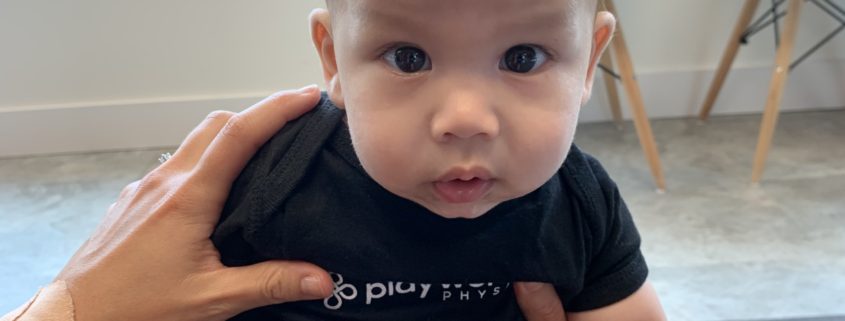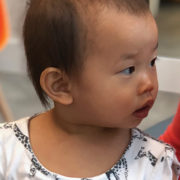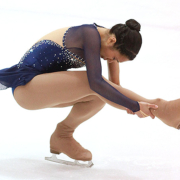What is Torticollis ?
Torticollis is the term used to describe the tightening of a muscle in baby’s neck. It is the shortening of one of the neck muscles, the sternocleidomastoid (SCM), which results in the baby’s head tilting slightly to the side and rotating in the opposite direction.
What are some causes of torticollis?
- Position of baby in utero (higher risk with twins or pregnancies with growth restrictions)
- A long/difficult labour and delivery which can cause muscle spasms in baby’s neck
- A preference of looking one direction over the other, eventually leading to the muscle shortening
- Having a flat spot on the head may cause the baby to always rest in this position and over time, tightens the muscle
These are some conditions that appear like torticollis and are important to rule out:
- Vision difficulties
- Hearing difficulties
- Reflux or GERD
- Viral infections
- Improper alignment of the spine
How will torticollis impact my child?
Imagine your baby trying to develop their gross-motor milestones while their head is always tilted and looking one way. They will have difficulty with the following:
- Learning to roll both directions
- Learning how to sit independently
- Discovering where the center of their body is (discovering midline)
Furthermore, torticollis can often lead to plagiocephaly – a flat spot on baby’s head, because of a preference to always rest in one position. See our plagiocephaly post here: Help! My baby has a flat head!
The neat thing about torticollis and plagiocephaly is it can be corrected quite easily, especially from a young age. EARLY INTERVENTION is key, and easiest to treat.
What to expect during an assessment with your paediatric physiotherapist:
- We will see how your baby’s neck moves to determine if there are any restrictions
- Rule out the more complicated causes of torticollis
- Provide tips to help to correct this and if warranted, give you stretches and strengthening exercises appropriate for the stage of your baby’s development
- Depending on baby’s age and severity of the torticollis, we may also track your baby’s head shape to ensure they’re not developing a flat spot
Remember, the EARLIER the BETTER. It’s much easier to work on positioning and stretching exercises with younger babies, and that can allow us to introduce strength exercises at the optimal time.
If you have any questions, please contact us at hello@playworksphysio.com! We’re able to provide assessments over video call until we get over the COVID-19 hurdle. You do not need a referral for physiotherapy.
Written by: Karly Dagys, Physiotherapist









